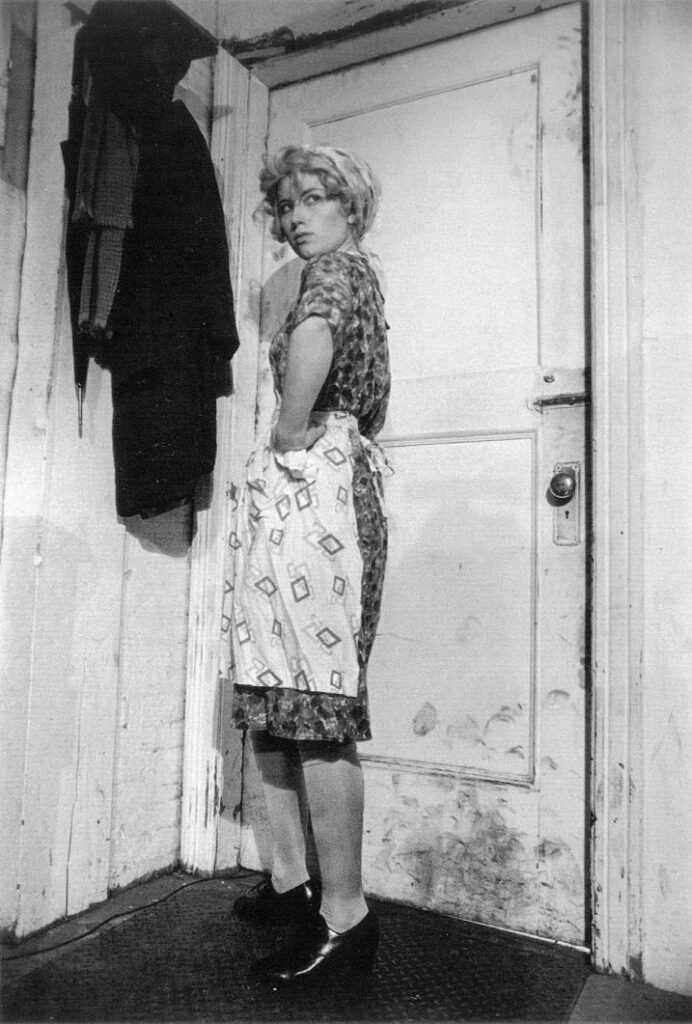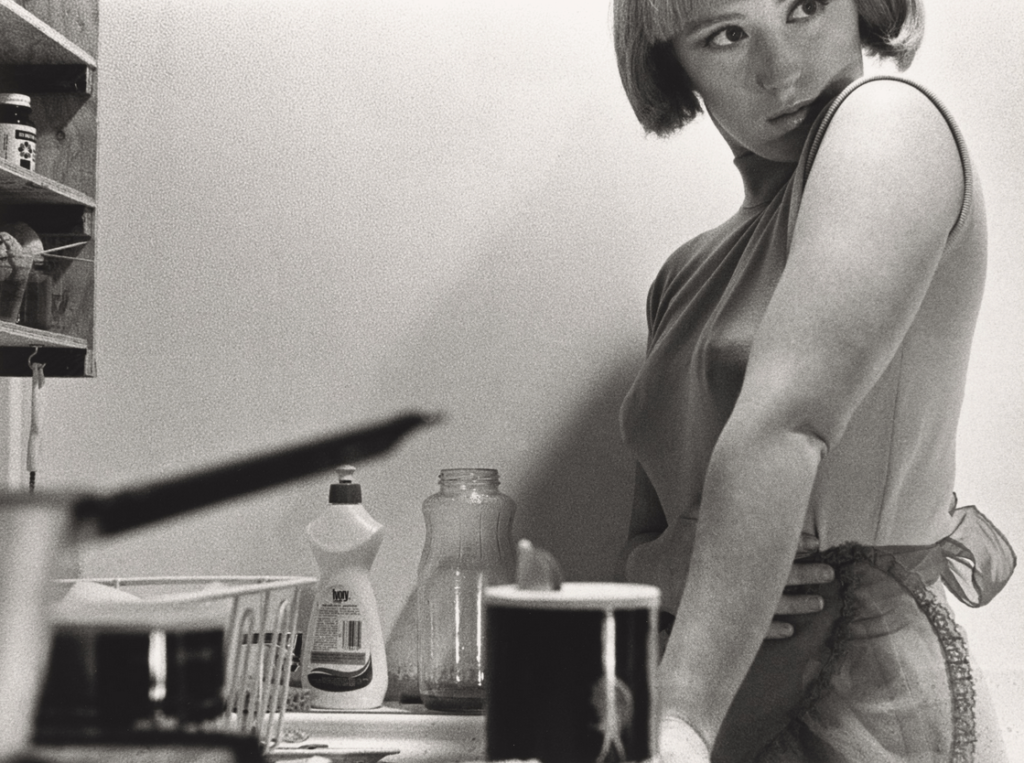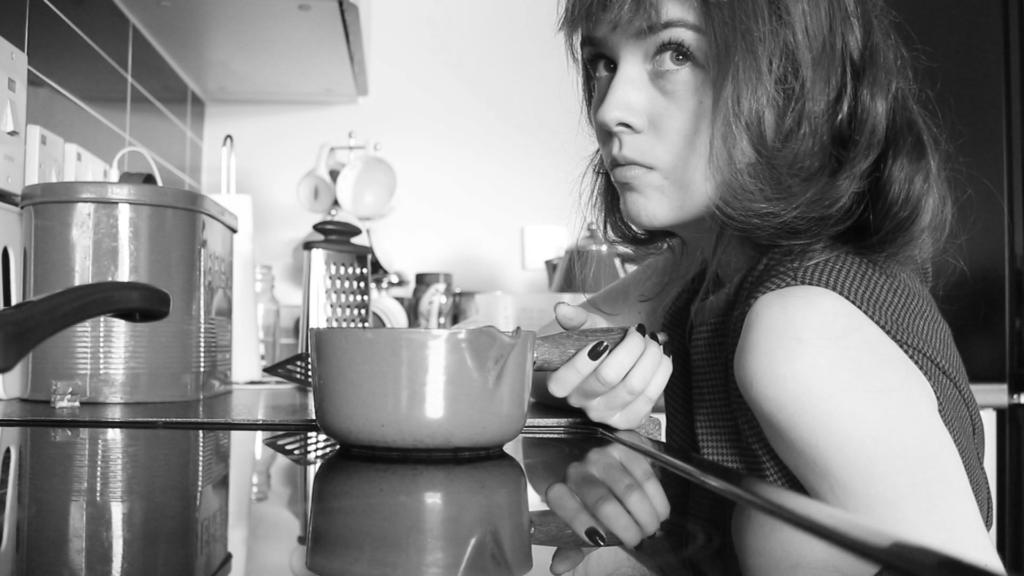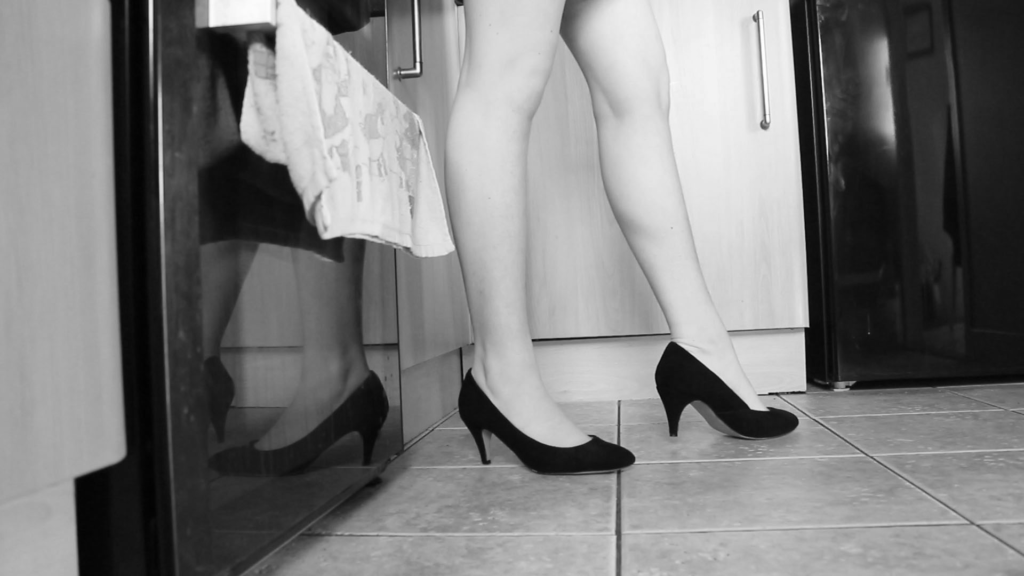




This was a photoshoot named ‘untitled film stills’ where Cindy Sherman took up the persona of different characters. Shes both the model and photographer in these photoshoots making them self-portraits.
Her photographs were taken in the 70s where each character has taken inspiration from the ages. She’s challenging expectations, stereotypes and prejudices. Her characters are removed from her own personality, identity and ideals despite the assumptions of Cindy Sherman projecting the want to be a femme fetale, a common reoccurrence across characters.
Her characters were inspired by films from the 50s which she grew up with. These showed women as objects filmed by male directors leading to the character of the femme fetale, a character Cindy Sherman took inspiration from.
The femme fetale is a French phrase meaning dangerous woman. Its come from old cinema where women were objectified and in many films leading to the title of this collection: “Film Stills”. These images are stills from no film in particular and just a recollection of overlapping ideas. This was a character that Cindy Sherman portrayed in her untitled film stills as it is an easy character to identify. The presence of this character led people to claim that Cindy Sherman’s work was a projection of her fantasies as opposed to an unbiased creation of characters because even in the 70s misogyny was prevalent and a woman photographing herself must have been for attention.

This image is a self-portrait of Cindy Sherman where she is posed in a kitchen as a character. She is stood in front of a sink wearing an apron. This is a response to gender roles/stereotypes shown in the media which in this case is the expectation that women should be in the kitchen. However the character is wearing a mesh apron, not a functional apron showing that the action of standing at the sink is purely for show commenting on films treatment of female characters and how everything they do is for show to appeal to the male audience. Her character is looking away with a bored expression to show that she is simply stood where she would be expected to be despite having absolutely no interest in it.
Similarly to stereotypical art focusing on a woman, her body is in frame. Her head is slightly cut off showing its lack of importance. She is not looking at or acknowledging the camera since the camera is watching her without her knowledge and thus objectifying her. This type of framing is common place in media which shows people in parts instead of as a person which act as signifiers. Additionally the camera will capture moments of characters when they think are meant to be alone which is what this photograph shows.
This image uses the artificial kitchen light overhead which is reflecting on the wall. It has been taken in black and white with little pure white or black and is mostly mid-tone greys. One of the few exceptions to this being the white of her eyes. Her eyes being well lit makes them stand out as bright, large and shiny showing a hope for being out of frame or elsewhere which is where her eyes are looking. The dishes are a dull necessity as opposed to something that she cares about. The use of artificial lights shows that this is supposed to seem just like a normal household.
The use of props around her fully submerges her character into the environment. A sense of depth is created with the counter props which have varying distances from the camera. Some are better in focus than others with dirty dishes being out of focus and the cleaning supplies being in focus. By ensuring that the supplies are in focus this creates a tidier appearance as they are used for cleaning as opposed to being in need of cleaning. This signifies the need for beauty even when alone in the comfort of your own home.
There is a large empty space above the sink which draws the eye away and creates an unfinished environment such as a new house or filming set. It feels as though something is missing which could signify the disingenuous nature of actors reading a script in films or the fact that this lifestyle is unrewarding and empty.
Shannon O’Donnell
Cindy Sherman has been an inspiration to many photographers, one being Shannon O’Donnell. Shannon O’Donnell is a photographer who explores themes such as gender identity.

Shannon O’Donnell filmed herself while playing out characters. This requires many skills such as acting on top of the skills required of a photographer. She’s had to act, direct and shoot all at the same time which is really difficult. She achieved these imaged by shooting on film. This is because switching between a still photograph and acting was a time consuming and difficult process. Instead she filmed in typical 24 frames per second and using adobe premier, selected individual frames.
She photographed herself in character. This character was of a woman around the house. This character was dressed up as though she was going out which directly contradicts with her domestic tasks of tidying up, doing dishes and cooking. Her book is presented in a tea towel further showing this domesticity. I believe this character shows the many expectations placed on women.
This was shot in colour but selected, refined and presented. The images were changed into black and white like Cindy Sherman’s but I believe there’s also another meaning behind this change. I believe the effect of black and white shows how outdated gender expectations are compared to the rapid evolution of technology. Technology has advanced massively and the option of colour was there however these gender expectations still remain. Additionally the black and white seems more personal since there are no flashy colours. This shows how it effects everyone on a personal level.

This image shows Shannon O’Donnell in character in the kitchen. The choice to incorporate background ensures that the images aren’t strictly about the character because the character in her environment puts her into context. This kitchen is just as important as her.
She’s dressed up showing expectations of dress and appearance while the background shows expectations of housekeeping. Despite both expectations of women being well known, its an unusual occurrence for some to be cleaning the house in high heels. This was inspired by Cindy Sherman with much thought put into the composition. This is clear in the dress which is a vintage cut (waistline and shoulder pattern).

A lot of her photos are of her legs and shoes, this is reflective of films objectifying women by introducing them by their body first. A camera will start with the shoes which would typically be heels. These heels are associated with the femme fetale archetype. Heels are not a convenient shoe and lengthen legs which have been historically provocative. The camera would then pan up the legs which are an obvious signifier. This camera action has been shown in these images. This image also uses the reflection from the oven to reflect the shoes to direct additional focus.
